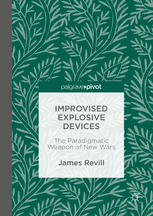

Most ebook files are in PDF format, so you can easily read them using various software such as Foxit Reader or directly on the Google Chrome browser.
Some ebook files are released by publishers in other formats such as .awz, .mobi, .epub, .fb2, etc. You may need to install specific software to read these formats on mobile/PC, such as Calibre.
Please read the tutorial at this link. https://ebooknice.com/page/post?id=faq
We offer FREE conversion to the popular formats you request; however, this may take some time. Therefore, right after payment, please email us, and we will try to provide the service as quickly as possible.
For some exceptional file formats or broken links (if any), please refrain from opening any disputes. Instead, email us first, and we will try to assist within a maximum of 6 hours.
EbookNice Team

Status:
Available4.7
40 reviewsThis book begins with an account of the evolution of improvised explosive devices using a number of micro case studies to explore how and why actors have initiated IED campaigns; how new and old technologies and expertise have been exploited and how ethical barriers to IED development and deployment have been dealt with. It proceeds to bring the evidence from the case studies together to identify themes and trends in IED development, before looking at what can realistically be done to mitigate the threat of IEDs in the new wars of the twenty first century. The book suggests that the advance and availability of a combination of technological factors, in conjunction with changes in the nature of contemporary conflicts, have led to the emergence of IEDs as the paradigmatic weapons of new wars. However their prevalence in contemporary and future conflicts is not inevitable, but rather depends on the willingness of multiple sets of actors at different levels to build a web of preventative measures to mitigate – if not eradicate – IED development and deployment.